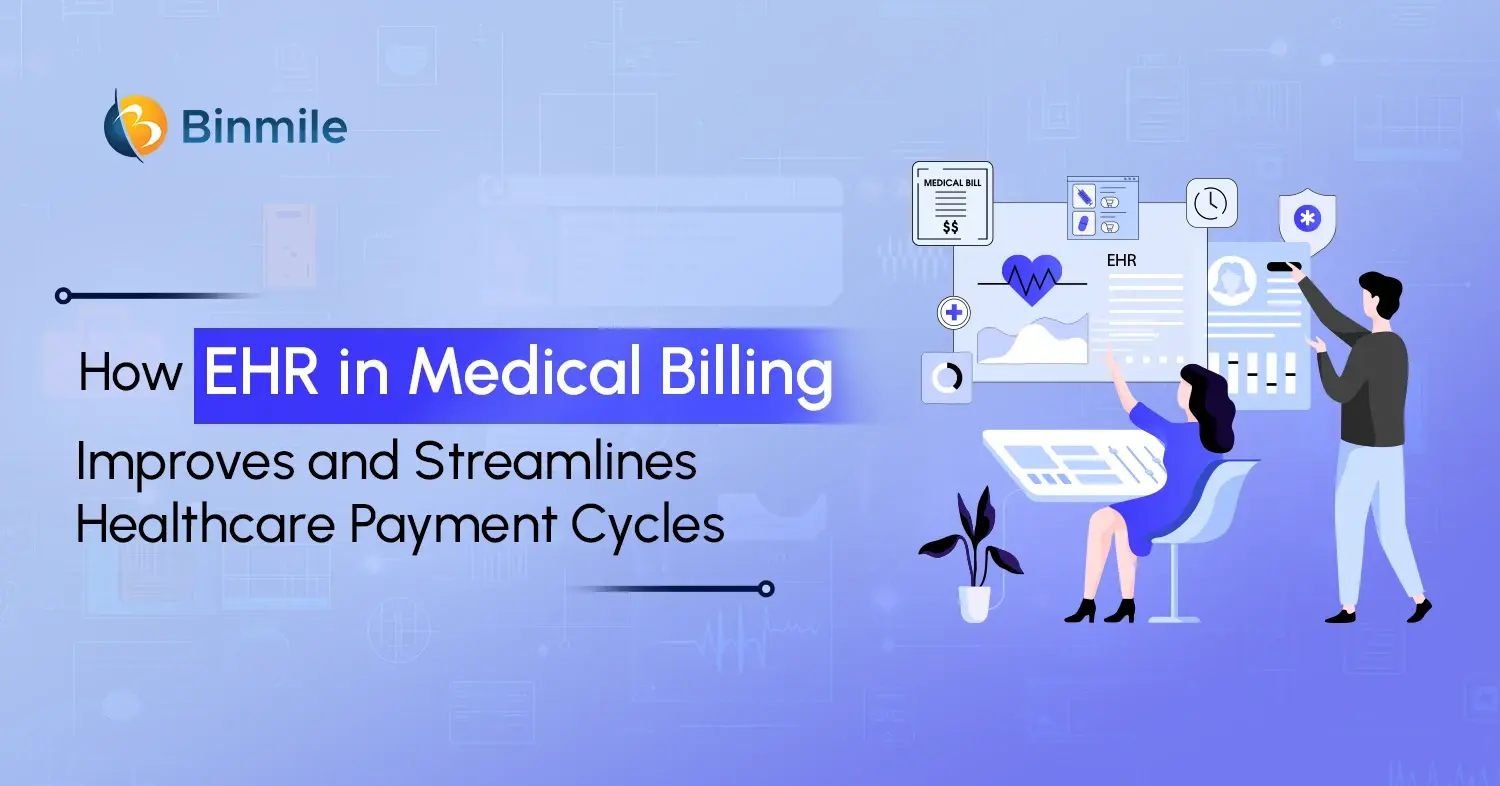Business enterprises try to optimize their workflows with existing manual business processes. However, the manual processes are often tiring, highly expensive, and prone to errors. This is where BPA (Business Process Automation) offers its practical strategies to encounter these issues. Companies integrating BPA into their workflows are experiencing maximum growth and more efficient processes. Therefore, businesses must follow the latest business process automation trends to not only stay relevant but also keep operations future-ready.
For streamlined operations, businesses have started utilizing new BPA trends to streamline operations. The demand for these BPA trends is huge, and the global business process automation market has reached a size of US$ 15.3 billion in 2025. So what are these BPA trends? How can they help you process your services effectively? In this blog, we have provided the top 7 business process automation trends, their key benefits, and challenges to help you choose the BPA trend for your company’s growth aspects.
What is Business Process Automation?
Business Process Automation, or BPA, is a strategy that automates repetitive tasks, streamlines day-to-day operations, and improves the time-to-market delivery. It uses technologies such as artificial intelligence, machine learning, robotic process automation, and other advanced technologies. The integration of these advanced technologies into existing workflows enhances operational efficiency and keeps the business functioning smoothly with minimal human support.
In addition, automating the business process reduces the likelihood of errors. This automated process ensures improved user experiences by offering real-time, accurate data, personalized interactions, and faster services. Be it managing accounts, processing orders, handling inventory management, employee onboarding, or new acquisitions, all these processes can be fully or partially automated.
How are BPA, RPA, and BPM Related?
Business process automation (BPA), robotic process automation (RPA), and business process management (BPM) are interrelated. They all come under one broader umbrella scope, which is business process improvement.
- BPA and RPA are methodologies that come within a detailed business process management (BPM) framework.
- BPA streamlines the business process by providing automation techniques. On the other hand, RPA is a specific type of BPA, which mimics human interactions and automates repetitive core tasks.
- Now, these two come under the same framework, that is, Business Process Management. BPM is a systematic approach that defines the workflow phases and tracks progress by metrics, leading to a better business outcome.
Top Business Process Automation Trends 2025: A Comprehensive List to Watch For

1. Hyperautomation
Hyperautomation is an emerging yet popular approach that mainly focuses on automating every single business process. It extends this strategy by combining advanced innovations such as RPA, AI, ML, process mining, etc. It doesn’t just promote automating repetitive tasks, but entire core business operations, along with seamless integration with existing infrastructure.
RPA (Robotic Process Automation) in hyperautomation automates manual tasks with less human intervention. ML (Machine Learning) provides analytic algorithms for improving business processes. AI helps in automating complex business-oriented tasks for faster and more accurate decision-making. Lastly, process mining extends its help by identifying bottlenecks and inefficient automated processes.
Why it matters:
- Businesses use this end-to-end automation process to gain a competitive edge, as it offers well-defined and strategic work processes.
- This strategy also provides real-time analytics that helps in faster decision-making.
- Companies seeking scalable solutions without increasing manual labor can benefit from hyperautomation methodology.
- It is ideal for various sectors such as healthcare, retail, financial services, and more.
2. Low-code/no-code Platforms
Low-code or no-code development platforms do not require in-depth coding expertise, thus offering faster development cycles with fewer changes or errors. The platform also allows businesses to develop rapid MVPs with minimal coding, with features such as drag-and-drop functionalities, built-in coding templates, among others.
These platforms perform all the testing protocols and deployment processes in the backend. Users visually select logic-driven visuals and connect the components, which helps to create a desired automated workflow with minimal or no coding. Additionally, they integrate well with third-party tools or services, which increases the flexibility and reduces the costs.
Why it matters:
- Low-code functionalities provide seamless collaboration between non-technical and technical teams, directly increasing productivity.
- This platform allows faster development and deployment cycles, enhancing the time-to-market delivery.
- It also cuts down operational costs, as there is a reduced need for developers with this automation platform.
- It is ideal for multiple systems, such as supply chain management, rapid application prototyping, scalable applications, and much more.
3. Intelligent Automation
Intelligent automation, or IA, is a key BPA trend that encompasses AI and other technologies such as robotic process automation and business process management. By incorporating these technologies, IA provides enhanced business processes and critical decision-making analysis in real-time.
AI enhances the decision-making processes with its predictive analytics and helps businesses to learn, adapt to, and tackle unfavorable situations. RPA eliminates the need for manual tasks by mimicking user behavior and offering rule-based tasks. Lastly, BPM ensures that the overall business workflow is efficient for a better and streamlined workflow.
Why it matters:
- AI-powered insights enhance the user experience and provide them with a more adaptable solution.
- It provides consistent workflows and accuracy, which results in high-quality processes.
- Businesses seeking scalable operation solutions without increasing labor and overburdening them can gain a competitive advantage from this trend.
- It is ideal for numerous sectors, such as banking, healthcare, retail, etc.
4. Mobile Automation
Mobile automation refers to automating the testing process of mobile applications. It consists of testing automation capabilities such as functional testing, regression testing, and integration testing. It accelerates the testing process by using specialized tools and allowing for continuous integration and continuous deployment (CI/CD). With the execution of test cases quickly, it ensures faster development releases and high quality products.
With an appropriate automation testing tool, users can start with a test framework and set up the required connections for executing the test scripts. Also, tracking the test progress can be done by real-time analysis feature, which helps in identifying bugs earlier. This enables wider test coverage with multiple devices, platforms, and situations.
Why it matters:
- It executes with a streamlined operational approach, ensuring a cost-effective solution.
- It integrates with mobile-friendly BPA tools and helps by increasing the efficiency of work processes.
- A more comprehensive testing cycle leads to faster deployment, ultimately resulting in higher ROIs.
- It is ideal for industries such as gaming, e-commerce, banking, and finance.
5. Cloud-Based Automation
Cloud-based automation is transforming the way businesses used to work. With its scalable and cost-effective approaches, it provides a secure cloud for streamlining operations. A centralized workflow solution eliminates the need for other expensive infrastructure, offering flexibility and efficiency. This reduces the operating cost and also helps in faster deployment times.
It provides security and compliance protocols that can be incorporated within modern cloud BPA platforms. It includes advanced data encryption, adherence to regulatory bodies such as GDPR, role-based access controls, etc. These measures ensure the secure transaction of sensitive processes like financial transactions or the onboarding processes.
Why it matters:
- It reduces manual processing efforts by eliminating repetitive tasks and helps the team to focus on more innovative solutions.
- By providing a consistent security environment, it ensures staying competitive and a good user experience.
- It eliminates human intervention and manages cloud computing workloads, speeding up the entire process.
- It is ideal for numerous sectors like software development, insurance, finance, etc.
6. Sustainability-Focused Automation
Sustainability-focused automation supports eco-friendly initiatives and prioritizes environmental, social, and governance (ESG) goals. The most optimal approach to sustainable automation is introducing digital workflows that reduce paper usage. In addition, businesses can optimize their supply chain management by enhancing their resource efficiency, resulting in lower carbon emissions.
With the use of renewable energy sources, business process automation systems can manage their energy storage and usage. Eventually, this sustainable-driven automation promotes a circular economy approach by disassembling, recycling, and reusing products and materials, thus minimizing their wastage and maximizing their usage.
Why it matters:
- It optimizes the delivery routes by providing streamlined processes.
- By providing real-time demand systems, it adjusts and optimizes the energy needed by a process, subsequently reducing waste.
- It reduces landfill waste by using AI and robotics. This smart waste management technique re-routes the cycles faster.
- It is best for various sectors such as manufacturing, logistics, supply chains, etc.
7. Ethical Automation
Ethical automation is a key business process trend that ensures the best automation practices align with the current societal principles. Some of the key societal principles include fairness, data privacy, accountability, etc. This also includes a bias mitigation approach to minimize the bias based on parameters such as race, gender, status, etc. This not only promotes a clearly defined automated system that can enhance the performance of existing workflows, but it does more. This ethically driven automation system also enforces consistent decision-making, reduces human bias, and ensures transparency across processes.
Why it matters:
- It protects the employees from unemployment, as it provides ethical policies to ensure a transition instead of a job displacement.
- It offers transparency and a responsible automation process. This helps in protecting sensitive information from attackers.
- It is ideal for major sectors such as finance, manufacturing, healthcare, retail, and others.
Streamline testing and reduce errors—partner with test automation experts to accelerate software quality using the right tools and support.

Benefits of Adopting BPA Trends
After discussing the BPA Trends, let’s explore the key benefits of BPA Trends:

- Business process automation eliminates labor-intensive manual processes. This makes the processes more reliable and efficient. The team can now focus on core activities instead of working on repetitive tasks.
- A BPA system offers accuracy and reduces errors; thus, there is no need to reiterate the need for changing the functionalities. This helps save business costs and resources.
- Automation helps in reducing errors by providing accurate results. This leads to developing high-quality processes.
- BPA enables streamlined work processes, helping you improve your consistency within the workflows.
- With faster interactions and user-friendly automation solutions, businesses can benefit as it helps enhance experience and thus growth in the business.
Challenges of Business Process Automation Trends
Some of the challenges while adopting BPA trends are:
- A BPA system has to handle sensitive data, which often relies on robust security measures. Poor organizations’ security posture can lead to extensive data breaches and financial losses.
- Businesses have difficulty with incorporating advanced technologies into their existing workflows.
- Continuous monitoring and maintenance can be costly for businesses that are seeking low-budget solutions.
Simplify, scale, and grow—leverage automation to maximize business impact for agility, speed, and profitability.

Final Reflection: Business Process Automation Trends
Understanding and addressing the company’s goals can help you in embracing one of these BPA trends. With the correct implementation and by choosing the right automation trend, businesses can streamline their routine tasks, driving growth. BPA can reshape core processes, yielding more strategic and innovative services. While they come with some challenges, the benefits of adopting BPA, like reduced costs, efficiency, streamlined processes, etc., outweigh the challenges.
In this blog, we have discussed the top 7 main business process automation trends, their benefits, and challenges. For a streamlined BPA approach, partnering with a test automation company can help you by providing automated workflows for your business processes.









